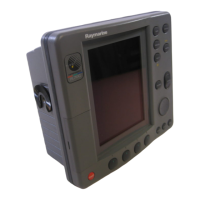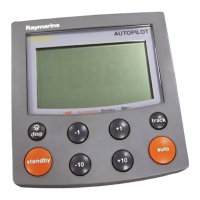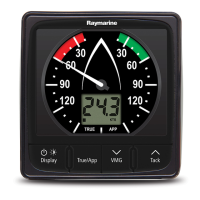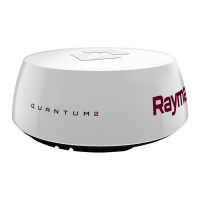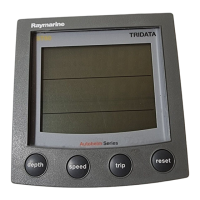3-4 hsb
2
PLUS Series LCD Display
Interpreting and
Adjusting the Radar
Picture
3.3 Interpreting and Adjusting the Radar Picture
Navigational echoes may be large,small, bright or faint, depending not only
on the size of the object but also on its orientation and surface.Different
objectsreflectthe radar signals in differentways. For example, vertical
objectssuch as cliffsreflectsignals better than sloping ones such as
sandbanks.
High coastlines and mountainous coastalregionscan be observed at the
longestradarrange.However,thefirstsightoflandmaybeamountainseveral
miles inland from the coastline. The actual coastline may not appear on the
radar until the vessel is close to the line of sight distance.
The radar indicationmay not be similar to your visualobservation; a nearby
smallobject may appearto be the same size as a distant large object on the
radar. However, withexperiencethe approximatesize of differentobjects can
be determined by the relative size and brightness of the echoes.
Some targets,such as buoys and small boats, can be difficult to differentiate,
since they bob and toss about in the waves and do not presenta consistent
reflecting surface.Consequently, theseechoes have a tendencyto fade and
brightenand,attimes,to disappearmomentarily.Buoys and small boatsoften
resembleeach other, but boats can usually be distinguished by their motion.
Not all radar echoes are produced by hard navigational items. Some echoes
may be received from irregularities on the surfaceof the water, particularlyat
closerange(seaclutter),orfromrainorsnoweitheraroundthevesselorin the
distance.Inaddition,someechoesmaybeindirectreturnstotheradarscanner,
providingfalse echoes or multipleechoes.
Theeffectsofmanyfalseechoescanbeminimized,andthetargetpresentation
clarifiedusing the controls summarized below. This section explainshow to
interpret the radar pictureand how the controls affect the display. It provides
instructions for adjustingthe settings, describes the circumstancesin which
theyshould be adjusted, and how they interactwith eachother.
Table 3-3: Controls to Adjust the Radar Picture
Control Option Function Default Setting
GAIN GAIN
SEA
RAIN
FTC
Controls the strength of the target returns
Reduces sea returns
Reduces close rain or snow returns
Reduces distant rain or snow returns
AUTO
AUTO-HARBOUR
OFF
OFF
MULTI TUNE Fine tunes the receive AUTO
TARGETS
Soft Key
INT REJ
EXPANSION
WAKES
Turns interference rejection on/off
Turns target expansion on/off
Turns wakes on/off and selects wakes length
ON
OFF
OFF
81186_3.book Page 4 Thursday, August 22, 2002 8:23 AM
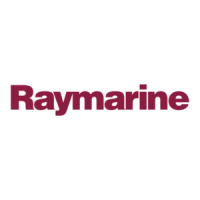
